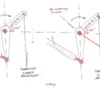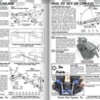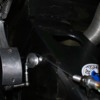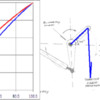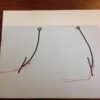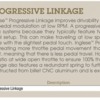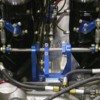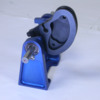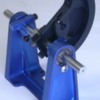I had my first time out with the Cat last week on the Zandvoord GP cirquit in Holland after a small project running out of control.
Ended up with an all alloy 100KG lighter racing engine. First try was great, No tecknical problems at all. Car was insane fast. But I have one big problem. The engine has a Kinsler velocity stack. The butterfly valves open way to fast. So there is no power control in the turns. It is either no power or to much power.
So I am looking for a throttle linkage that will give a proportional response to the gas pedal. Something like a eccentric wheel.
However there is only very limited space. The engine is real close to the bulkhead. The two shafts with the butterfly valves petrude the velocity stacks just below the window. On the shaft where the linkage arms are mounted is only 1 1/2 inch of space. There has to be a travel stop, a linkage to the other side ( the remaining 4 tacks ) and a control arm or wheel to move the shafts, on this 1 1/2 inch.
So any good ideas how to make a proportional throttle linkage?
Arno
Original Post


